Yoga has enjoyed increasing popularity over the years, in part for its reputation not only as a physical exercise but also as an exercise in mindfulness. Besides the physical benefits of regular yogic practice, yoga has a calming effect for many practitioners, and many make a daily habit of practicing yoga upon waking up and at night before bed. With it being part of the daily wake-up and wind-down routine, is it okay to skip the mat and practice yoga in our beds?
You can do some light yoga in your bed, though practicing more advanced asanas on a mattress is not recommended. To correctly practice most poses that require standing, a bed will ultimately prove to be too unstable. A steady, firm surface is needed to achieve proper balance and dynamic movements.
In this article, we’ll discuss the capacity for practicing yoga in bed and its downsides. We’ll also go into the benefits of beginning and ending your sleep cycle with yogic practice and list some positions that you can safely and effectively practice from the comfort of your own bed.
Why Is It Not Recommended to Practice Yoga in Bed?
You can do some light yogic stretching as a great way to start your mornings and conclude your days. However, doing yoga in bed is not advised for more serious practice, as the positions you can perform on a mattress will be quite limited.
In truth, most mattresses are too soft and unstable for the practitioner to reap the full benefits of yogic exercise because it can be difficult to achieve the ideal range of movement that a more flat and even surface would provide. Practicing on a hard surface will offer more support and provide more of a physical challenge, maximizing a yogic workout’s health benefits.
Although not an impossible feat to accomplish, here are a few reasons why practicing yoga in bed is not strongly encouraged.
Can Encourage Incorrect Practice
A basic tenet of yoga encourages practicing on a hard surface, with perhaps a mat or other light cushioning for comfort. Due to the curves, bends, and unpredictable movements of a mattress, it will be difficult to perform asanas correctly, as the positions are likely to be skewed.
Not only does this potentially develop incorrect habits regarding positioning and posture of the asanas, but it can also place unnecessary strain on different parts of the body.
Can Lead to Potential Injuries
It’s best to practice on as firm a surface as you find comfortable, as practicing on lax and unsteady surfaces can lead to muscle strain and injury. Balance is more difficult to maintain on a soft surface and can damage the joints, particularly the more delicate ankles and wrists.
A slightly uneven surface can provide more of a physical challenge for seasoned practitioners to test their balance and strengthen the respective muscles of the spine, hips, knees, and feet. This is not recommended for novice yogis. However, if a flat surface is unavailable for practice, it’s good to consider poses and asanas which will cater to sloping or angled surfaces.
If you’re new to practicing yoga, it’s a good idea to consult with a certified yoga teacher, physical therapist, or similarly licensed and trained professional to discuss positions and flows that might work best for you and your attendant physical strengths and weaknesses.
Less Physically Challenging
If you practice yoga to increase strength and flexibility, it’s best to conduct your practice on firmer surfaces. A mattress’s spongy surface will provide less resistance to the body, and stretches will not be as challenging or effective physically. The strengthening effects of yogic practice will be lessened on a bed, and the stretching will not be as satisfying or complete.
When Is It Okay to Do Yoga in Bed?
As mentioned earlier, it’s beneficial to engage in some light, basic stretches while rousing from sleep or as a pre-bedtime ritual. However, as noted above, the number of poses you can safely and efficiently practice in bed will be more limited than when you are situated on a more firm and even surface.
Below we’ll discuss the benefits of practicing yoga before and after sleep.
Morning Yogic Stretches
Yoga is a great way to center and orient yourself when starting the day, and many yoga schools preach that the ideal time for yoga practice is first thing in the morning. This is probably why many classic poses are referred to as sun salutations, meant to be performed as you greet the sun and the coming day.
The idea is that a morning yoga routine helps to begin the day with intention, equipping you with the mental strength and balance to take on the day’s challenges.
Gentle Bedtime Flows
It’s never a bad time to practice yoga, and evening yoga is equally as beneficial as morning exercises. A pre-bedtime yoga routine can be a great way to exhale the stresses of the day and help promote relaxation and quality of sleep.
A gentle flow is best for night time, as the more intense physical activity could serve to wake up the body rather than prepare it for slumber. It’s best to focus on meditation and breathing practices during night time yoga sessions rather than more physically challenging asanas.
Acceptable Poses for Bedside Practice
More rigorous sun salutations that require standing are best reserved for practice on a firm surface with a mat. However, many poses are fairly low-impact and are more flexibility oriented. It is meant to stretch, relax, and relieve muscles instead of strengthening them.
Here are nine beneficial and effective low-impact poses to try out from the comfort of your bed. These can be performed both when starting the day and at night when bidding it farewell.
- Happy Baby: It is a relatively simple and relaxing pose that offers a thorough stretch for the hips and lower back.

- Child’s Pose: One of the most soothing poses, the child’s pose is an uncomplicated and restorative asana that your lower back will thank you for.
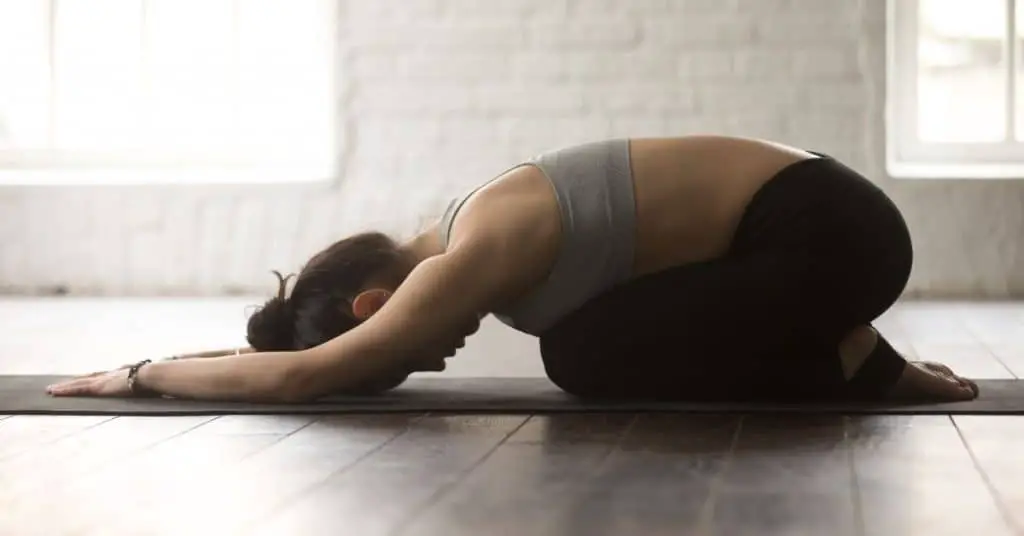
- Butterfly Pose: It is another low-impact stretch that will make your hips and lower back sigh with relief.
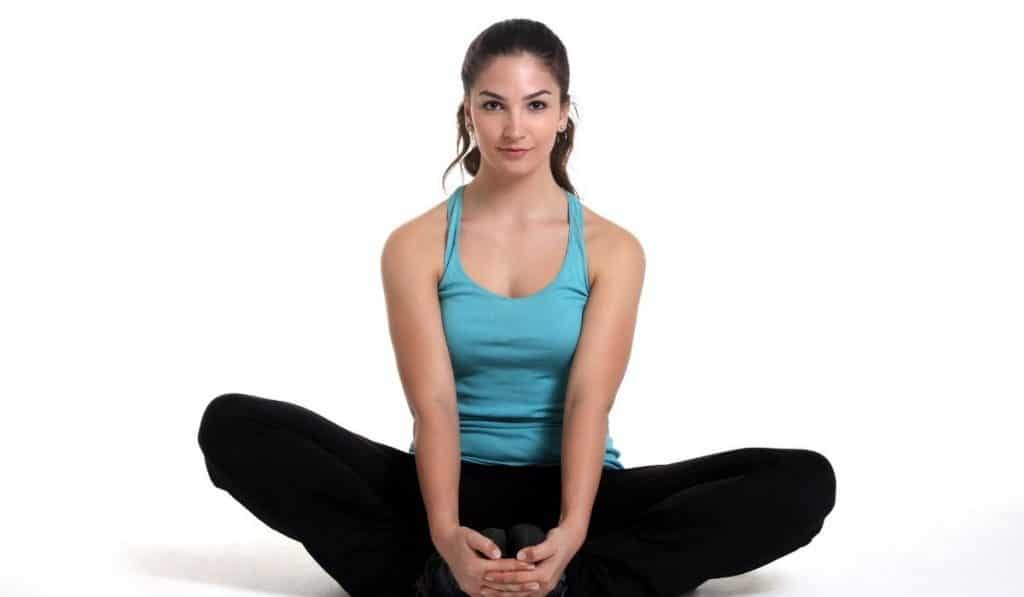
- Pigeon Pose: It is a great leg stretch for opening up tighter hips and the hip flexor muscles.
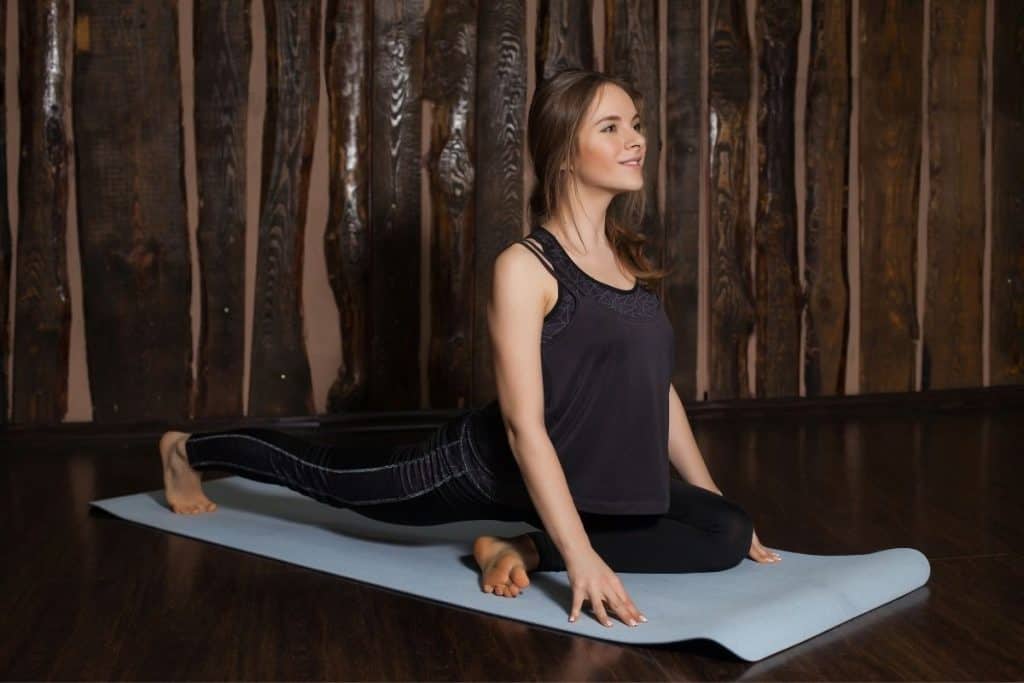
- Supine Spinal Twist: It is an optimal morning time stretch to prepare your spine for the day’s activities. You may even hear a few pops, but don’t worry, it’s just the sound of your back cracking.
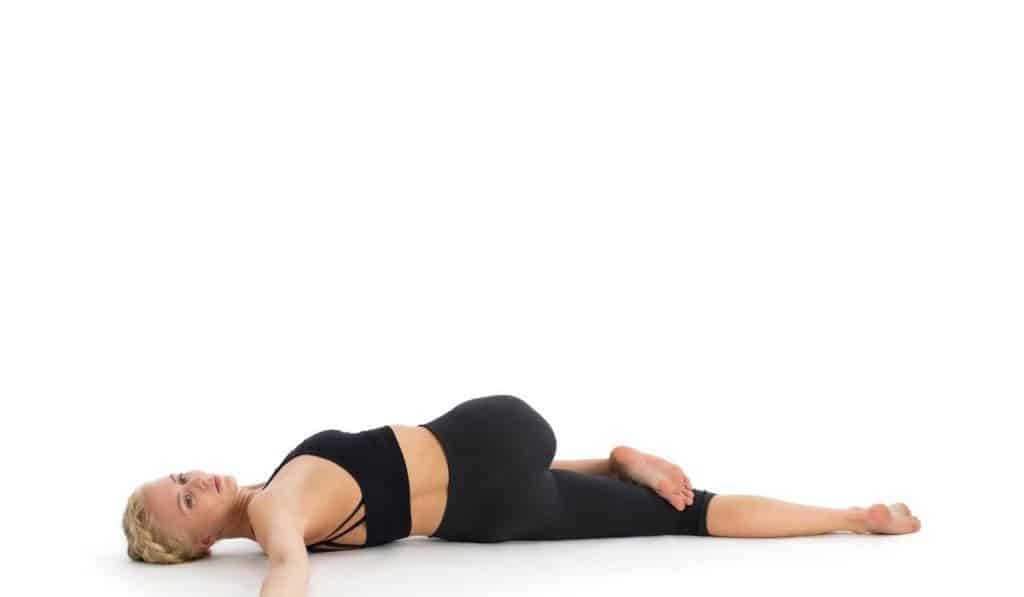
- Bridge Pose: It serves to boost flexibility in the spine and shoulders while also strengthening the thighs.
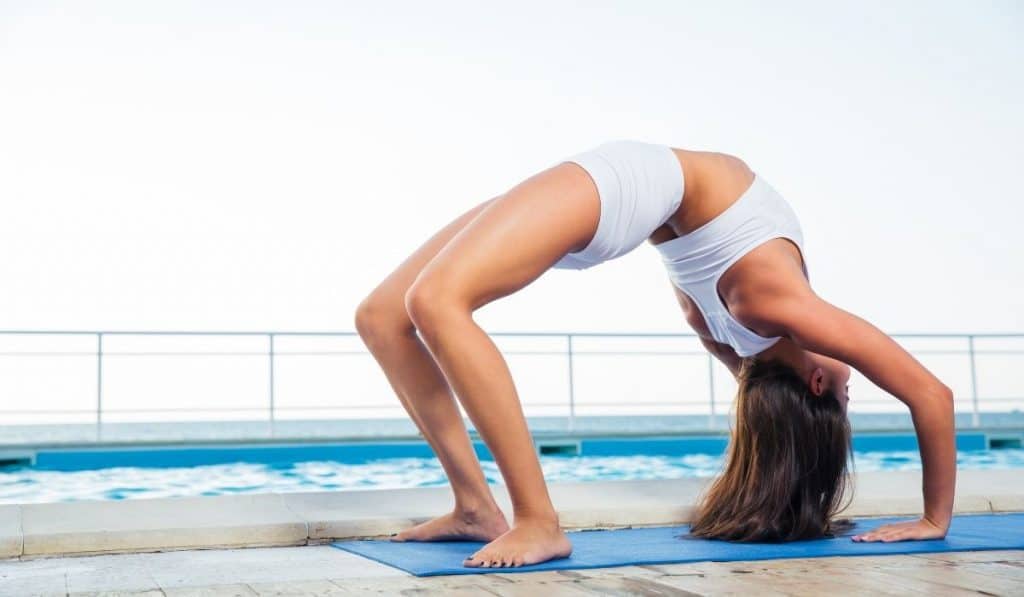
- Legs-Up-the-Wall Pose: It is a simple inversion that will decrease tension in the legs, great for anyone sore from a long day with lots of physical activity.
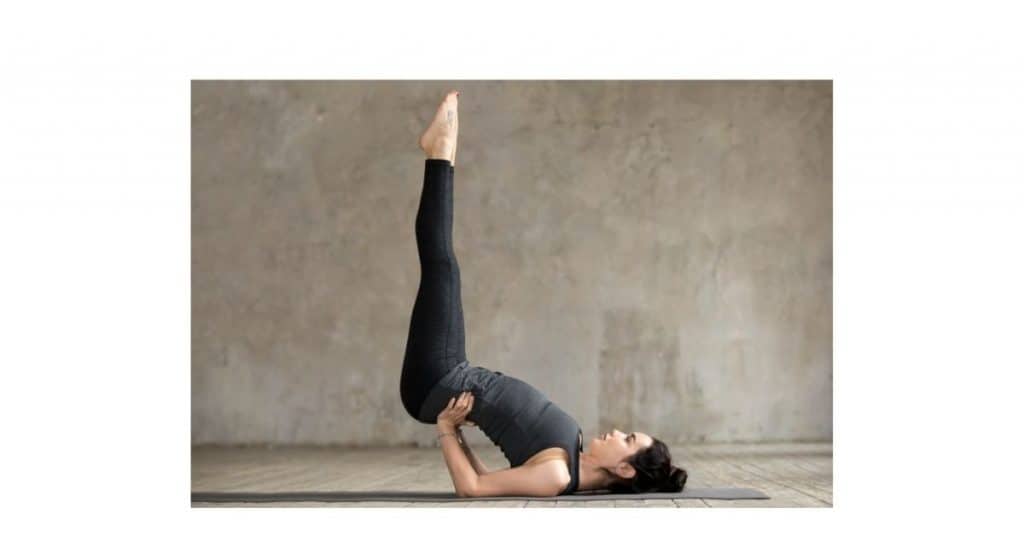
- Cobra Pose: It is a luxurious stretch that will open the chest, abdominal, and back muscles.
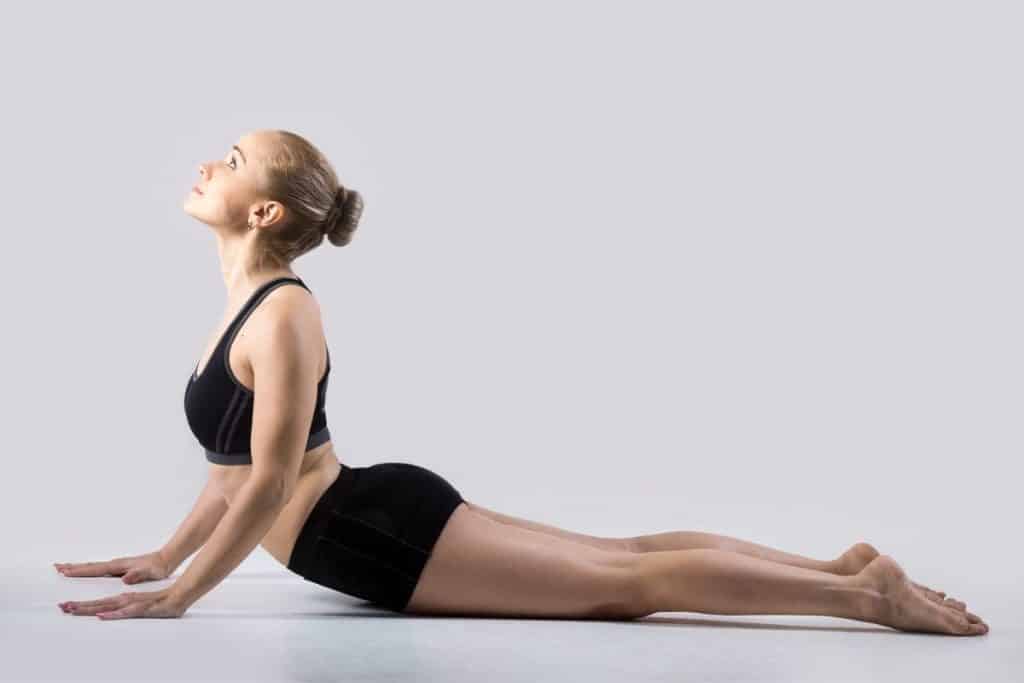
- Corpse Pose: It is a peaceful pose to finish any yogic practice with, particularly helpful before bedtime. It orients the mind towards relaxation and sleep.

Conclusion
While it’s possible to practice yoga in your bed, it isn’t necessarily a good idea when attempting more intense asanas. Yogic exercise is the safest and most efficient when practiced on a firm and stable surface. Doing yoga in bed can encourage incorrect practice, lead to potential injury, and lessen your workout’s overall effectiveness.
It is still possible to practice some light, and low-impact yoga poses in bed, which help mentally and physically energize the body to wake and relax before sleep.
Sources
- Huffington Post: Yoga Poses You Can Do Without Leaving Your Bed
- Healthline: Bedtime Yoga: How to Relax for a Good Night’s Sleep
- Quora: What kind of surface is best for doing yoga?
- Quora: Is it safe to do yoga on bed?
- Quora: Can I do yoga on my bed instead of on a mat on the floor?
- Pop Sugar: Do This Relaxing Yoga Sequence in Bed, Then Drift Off to Sleep
- Prevention: At-Home Yoga: Getting Started
- Sleep Number Blog: Morning Yoga Poses to Do in Bed
- We Travel: Tips For Moving Your Yoga Practice Outside
- Health and Yoga: Benefits of Yoga: Advice and Precautions
Sitasyoga.com is a participant in the Amazon Services LLC Associates Program, an affiliate advertising program designed to provide a means for sites to earn advertising fees by advertising and linking to Amazon.com. We also participate in other affiliate programs which compensate us for referring traffic.




